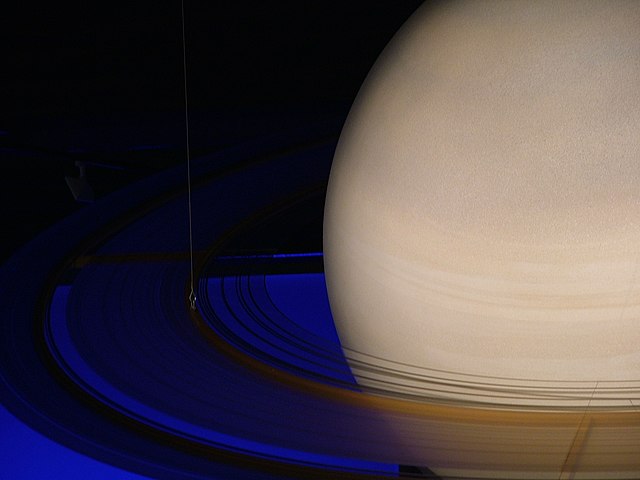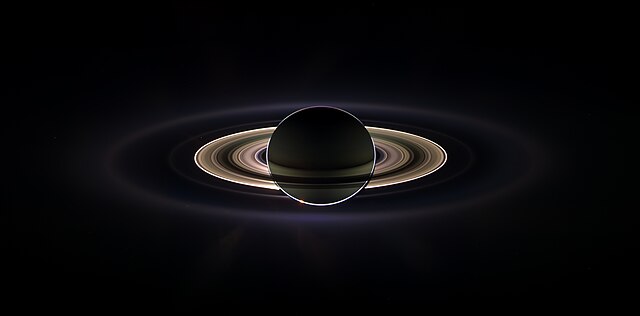The exploration of Saturn has been solely performed by crewless probes. Three missions were flybys, which formed an extended foundation of knowledge about the system. The Cassini–Huygens spacecraft, launched in 1997, was in orbit from 2004 to 2017.
Artwork utilizing exploration data, as revealed in "Sternstunden" in Oberhausen
Pioneer 11 image of Saturn.
Saturn eclipses the Sun, as seen from Cassini.
Missions to Saturn face competition from missions to other Solar System bodies
Pioneer 11 is a NASA robotic space probe launched on April 5, 1973, to study the asteroid belt, the environment around Jupiter and Saturn, the solar wind, and cosmic rays. It was the first probe to encounter Saturn, the second to fly through the asteroid belt, and the second to fly by Jupiter. Later, Pioneer 11 became the second of five artificial objects to achieve an escape velocity allowing it to leave the Solar System. Due to power constraints and the vast distance to the probe, the last routine contact with the spacecraft was on September 30, 1995, and the last good engineering data was received on November 24, 1995.
An artist's impression of a Pioneer spacecraft on its way to interstellar space.
Reconstructed full-scale mock-up Pioneer 10 / 11 spacecraft at the National Air and Space Museum
Side view of the spacecraft
Pioneer 11 during the installation of its protective shroud








